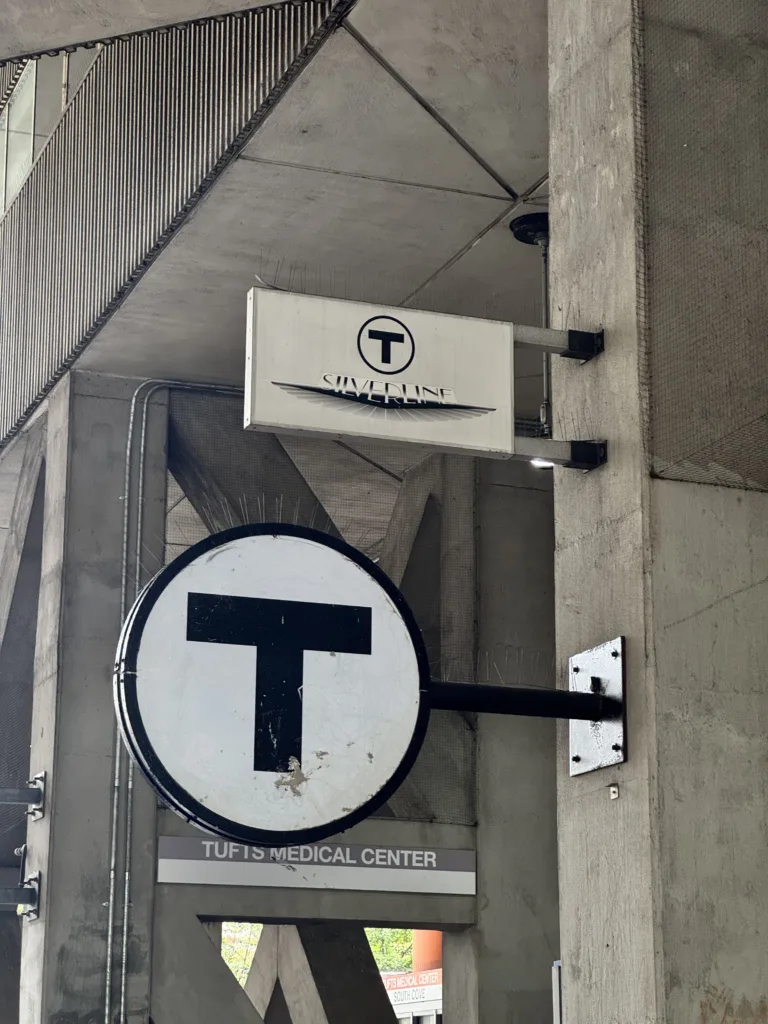
As a transit aficionado, my Roman Empire is the MBTA Silver Line. The Silver Line is a BRT (Bus Rapid Transit) that the MBTA (Massachusetts Bay Transportation Authority) tries to parade as a rapid transit line, despite the fact that it has five separate routes and runs almost half of it’s routing in mixed traffic. It even has dedicated space on the Subway map, and prominently features in signage at South Station, the MBTA’s busiest transit hub.
Last week, I got the chance to finally fly into Boston’s Logan Airport, which meant I got the pleasure of taking the Silver Line into the city. The SL1 connects the airport to South Station for free, which was great for someone like me who forgot to bring their old CharlieCard from 2022.
My Experience
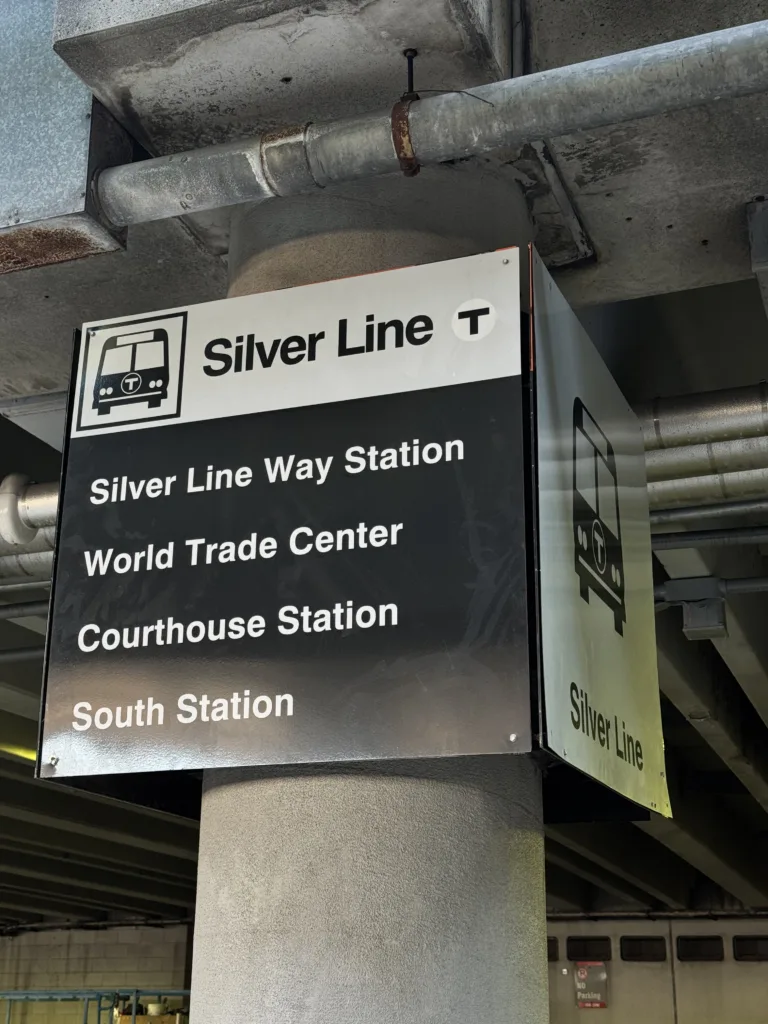
SL1 services all airport terminals, so it was easy to exit the baggage hall and straight to the Silver Line stop. Loved that! The Silver Line is supposed to come every 10 minutes at the time I wanted to take it, and although tracking said a bus would be coming in around 3 minutes it did end up taking 10. The boarding experience was smooth, all door boarding (because you don’t need to pay), and a lot of seating was taken out for luggage racks. Ridership was also pretty decent, the bus filled up by the time we got to the last terminal station.
The bus then drives out of the airport and through the Ted Williams Tunnel, linking East Boston to the main city. The strangest part of the trip begins here: the bus takes the exit to Seaport District, Boston’s super strange gentrified yuppie neighborhood (please watch out for my note on whatever Seaport is), and proceeds to stop outside the World Trade Center Station. Pretty normal as of now, but it continues to drive a couple blocks eastward until it reaches a tunnel portal.
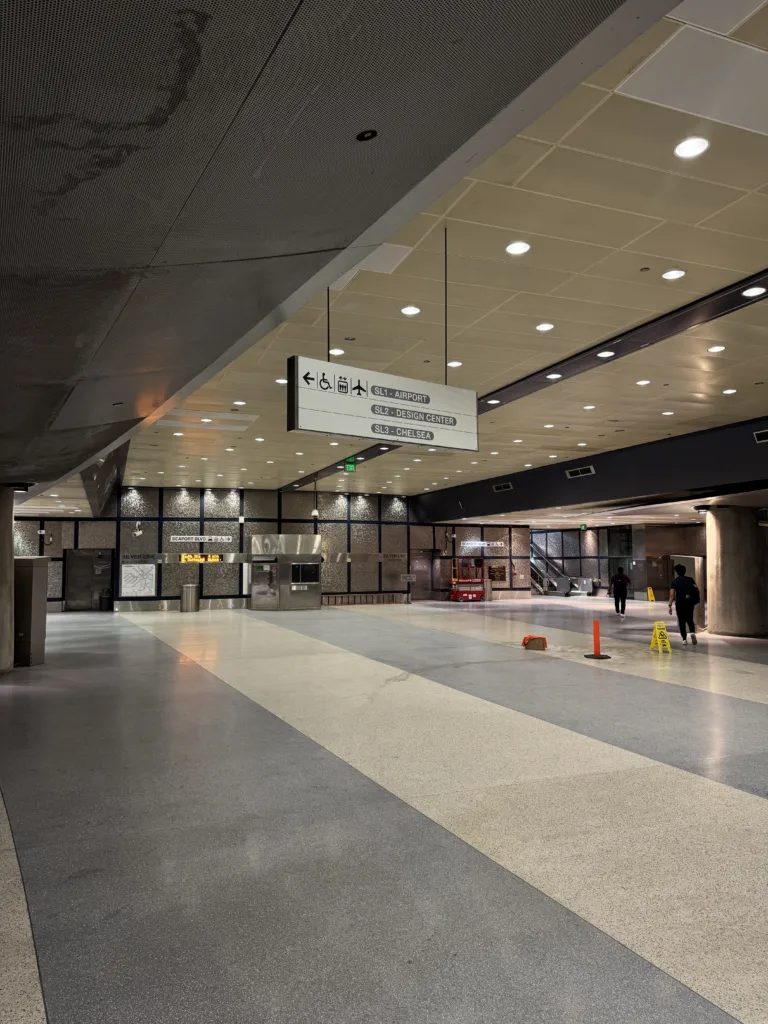
Past the tunnel portal, the bus dips down into traffic at a speed I can only describe as treacherous. Despite having a completely enclosed pathway, the bus runs at what seems like a snail’s pace. Also, the bus stops AGAIN at World Trade Center, but this time underground? The bus then continues crawling through the Seaport District, making another brief stop at Courthouse before ending it’s trip at South Station. Overall, the trip took around 40 minutes, which was around 10 minutes longer than I was expecting. The connection with the Red Line was great though – just a set of stairs downwards to the subway.
What I liked
The Silver Line is ultimately still public transit infrastructure, and although it may be the world’s slowest underground busway, plenty of people still use it. Three lines run along this underground portion, and with pretty decent frequencies, you can expect a bus to show up every two minutes. The permeance of the infrastructure means that development in the area has sprung around the stops, although as of now it’s mostly just shops you’d find in any major luxury mall and offices.
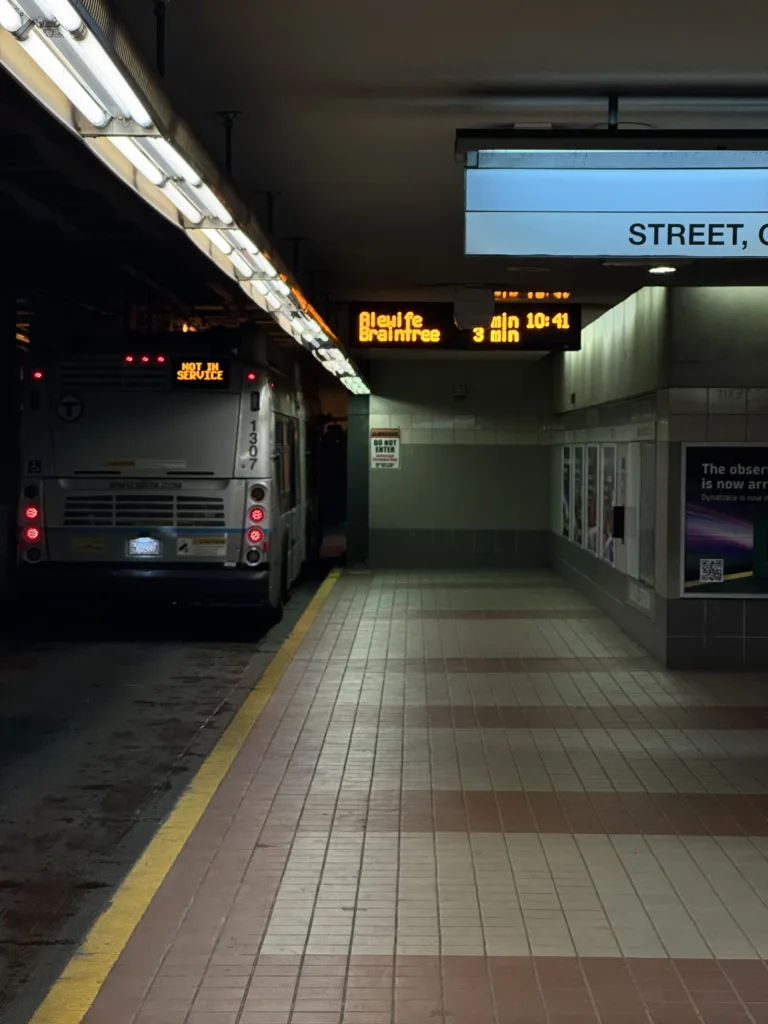
I also got to ride the Silver Line down to East Berkeley Street, which was just a regular bus, but it was a decently frequent bus! The Silver Line does have good frequencies on paper, which does make it a decently reliable link for riders. The fact that it’s just a bus also gives it more flexibility on future expansions, which are desperately needed in a city like Boston, where the population has grown by hundreds and thousands since the Silver Line opened with very few infrastructure projects to show for it.
What i Disliked
The Silver Line is a weird branding exercise for two completely separate bus line GROUPS: The Waterfront Lines (SL1 to 3) serve South Station to the Airport, Design Center, and Chelsea, while the Washington Street Lines (SL 4 and 5) were built to replace an old interurban railway line from Downtown to Nubian. The strangest part is that the two line groupings don’t really connect. They were supposed to connect as an extension of the transit tunnel from South Station down to South End, but with that project cancelled, the bus line exists in limbo. It makes no real sense to group all of these lines as “Silver Line” when they don’t even really operate as a proper line.
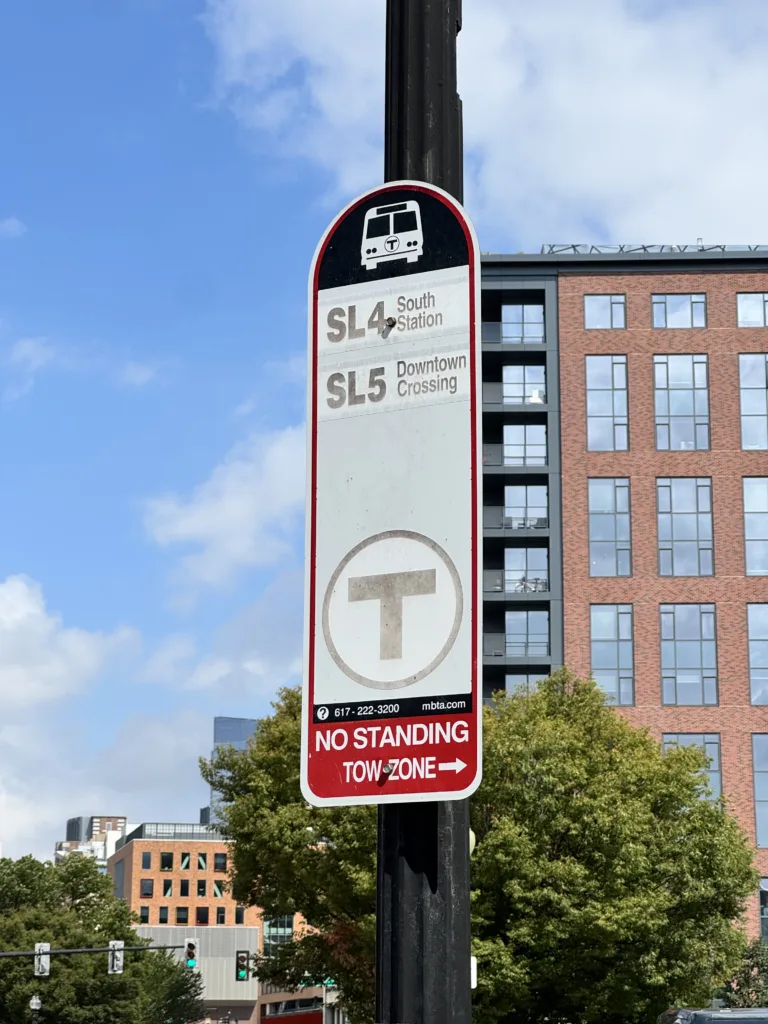
Other than the existing criticisms of the line (it’s not really BRT!), the Silver Line seems to face a lot of surprising infrastructure creep: stations in the Seaport are built as colossal palaces of transit with very little ridership to show for it. The stations are much larger than pretty much every single MBTA subway station, despite there being very little need for a bus station designed for 100,000+ people. No real idea why they decided to build palaces instead of spending that money on building that downtown connection that is desperately needed for the Silver Line to be a proper bus service.
On my way back to Logan Airport, I decided to take the Blue Line to the Airport instead, which somehow proved to be a much faster journey despite requiring a bus transfer. The Silver Line is not competitive coming from Downtown Boston since it still requires a fare, but it’s slower and requires a transfer for most users.
What to do?
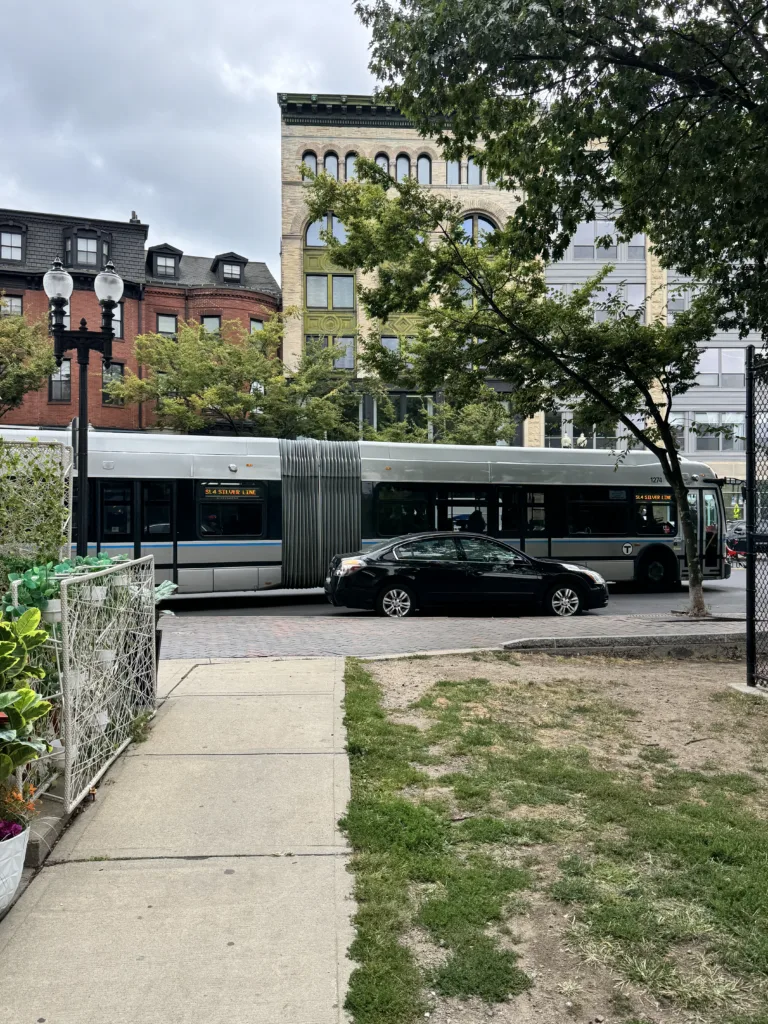
Overall, the Silver Line is a great start to BRT, but it’s an inadequate service for the residents and visitors of Boston alike. Twenty plus years later, I’m not sure if it’s been able to keep up with the region’s growth. Despite it’s subway-like branding, it fails to meet up to the standards of rapid transit, and needs to be upgraded to better serve the marginalized and gentrified communities along it’s corridor.
Learn more about the Silver Line at mbta.com.